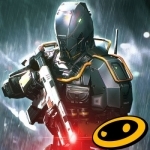
CCW – Concealed Carry 50 State Guide
Reference and Travel
App
This application is about empowering the CCW (concealed or open carry permit) holder (or anyone who...

Stylebook Men: Closet Organizer & Assistant
Lifestyle and Productivity
App
Get the most out of your closet - for the price of a latte or a gossip magazine, you could have a...
Sarah (7800 KP) rated The Midnight Sky (2020) in Movies
Dec 27, 2020
The trailer for this had me concerned. It looked very similar to many other sci-fi/end of the world films (think Sunshine, Interstellar, even The Day After Tomorrow) and nothing about it looked particularly original. I had hoped that the trailer might be misleading, but I’m afraid to say that this is every bit as lacklustre and predictable as the trailer implied.
Visually this looks stunning, both the set design and the special effects have obviously had a decent amount of time and money invested in them. Alongside this, Alexandre Desplat’s score is beautifully ephemeral and haunting, and accompanies the story well, feeling very in keeping with both the Arctic and the space settings. And aside from a decent cast, I’m afraid these are the only good things I can say about this film. The main problem is the story itself, it’s entirely predictable and suffers from every space and sci-fi mishap you could ever think of, from unexplainable drifting off course to the destruction of important equipment (comms of course, would you expect any less?) due to an unpredicted meteor strike. And this cliched predictability just makes the story so dull and drawn out over its two hour runtime.
To be honest, the whole film itself and the actions of the characters just doesn’t make any sense. You have a pregnant astronaut, who has virtually no sexual chemistry with the man she’s having a baby with, and who’s allowed to go outside into space with little concern over her or her baby’s well-being. A scientist who falls into sub-zero Arctic water which appears to have little impact on his health. And a child walking around in a summer dress with bare legs in the Arctic climate. Admittedly this latter point is addressed towards the end of the film in a rather obvious and over used plot twist, which is still rather unsatisfying. There’s also the large number of unexplained plot points. I’m all for keeping the watcher guessing and hate films that feel the need to over explain every aspect of the plot, but The Midnight Sky takes the opposite approach and explains barely anything. If you go into this expecting to find out what caused the radiation apocalypse or what happened to the rest of earth’s population you’ll be sorely disappointed. It also makes references to a K-23 colony ship that the Aether hasn’t heard from, yet provides no explanation or background as to the outcome of said ship, and also gives us flashbacks to Augustine’s past yet with little reason other than to provide an “A-ha” moment for the aforementioned plot twist. And the decisions made by the astronauts on the Aether once they’ve found out about Earth’s fate are just laughably ridiculous especially considering the fate of the rest of the population.
Despite the promising cast and effects, The Midnight Sky is yet another disappointing Netflix original that is light years away from some of the more brilliant sci-fi stories that have come before it.

Scanbot Pro: Scanner App & Fax
Utilities and Productivity
App
Scanbot is the best mobile scanner app for documents and QR codes. Create high-quality PDF or JPG...

Contract Killer: Sniper
Games and Entertainment
App
You are a master assassin, hired to infiltrate secure locations and eliminate high-profile targets....

Master Fear of Flying
Travel and Medical
App
Discover your flying fear type with our questionnaire at masterfearofflying.com The interactive...

Scanner Pro by Readdle
Business and Productivity
App
Scanner Pro is the best app for quickly scanning and saving a digital version of a paper document....

Ease My Mind by Shout Out Louds
Album Watch
In their 15 years as a band, Shout Out Louds have toured the world many times. The band played a...
alternative rock


